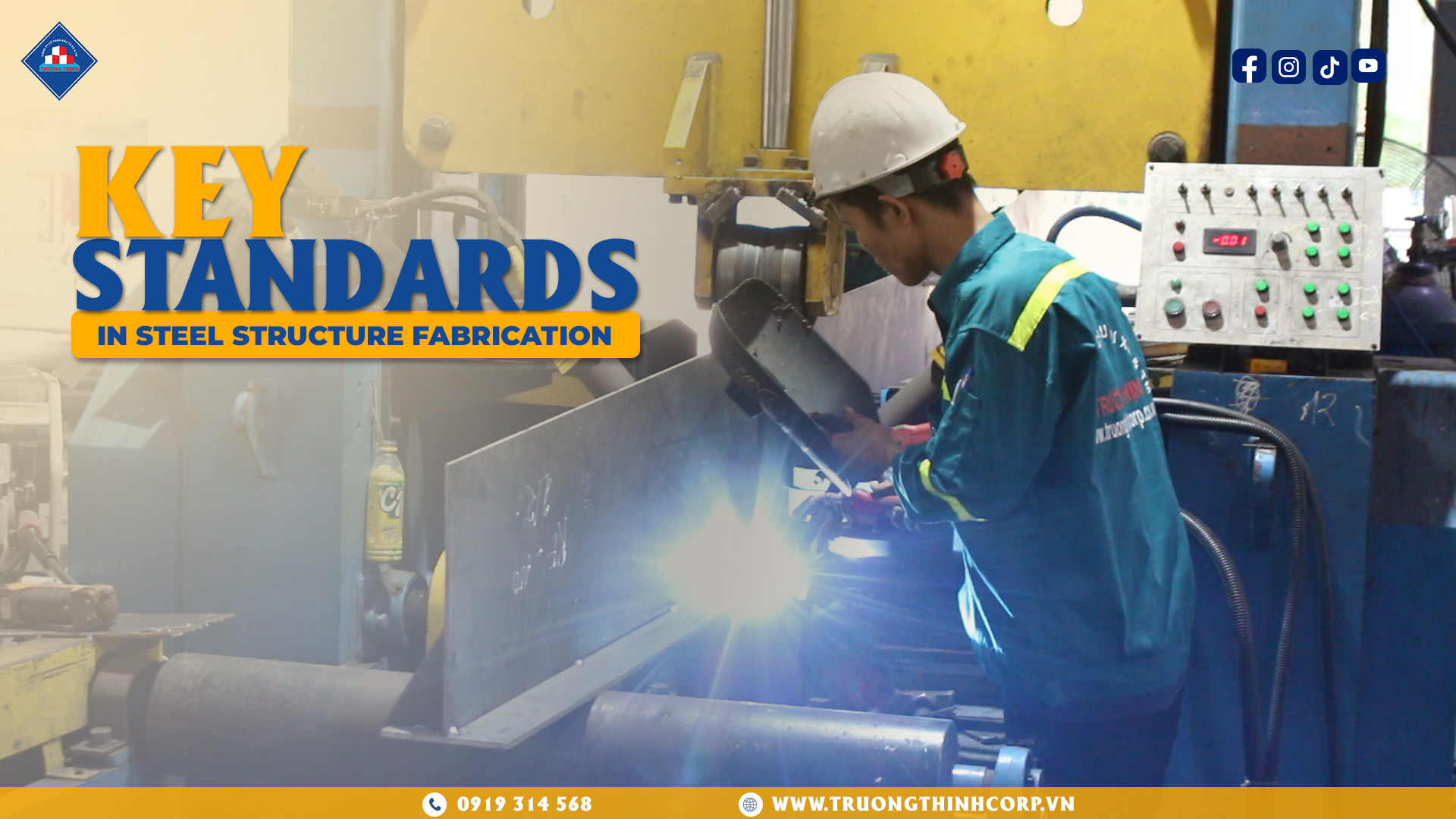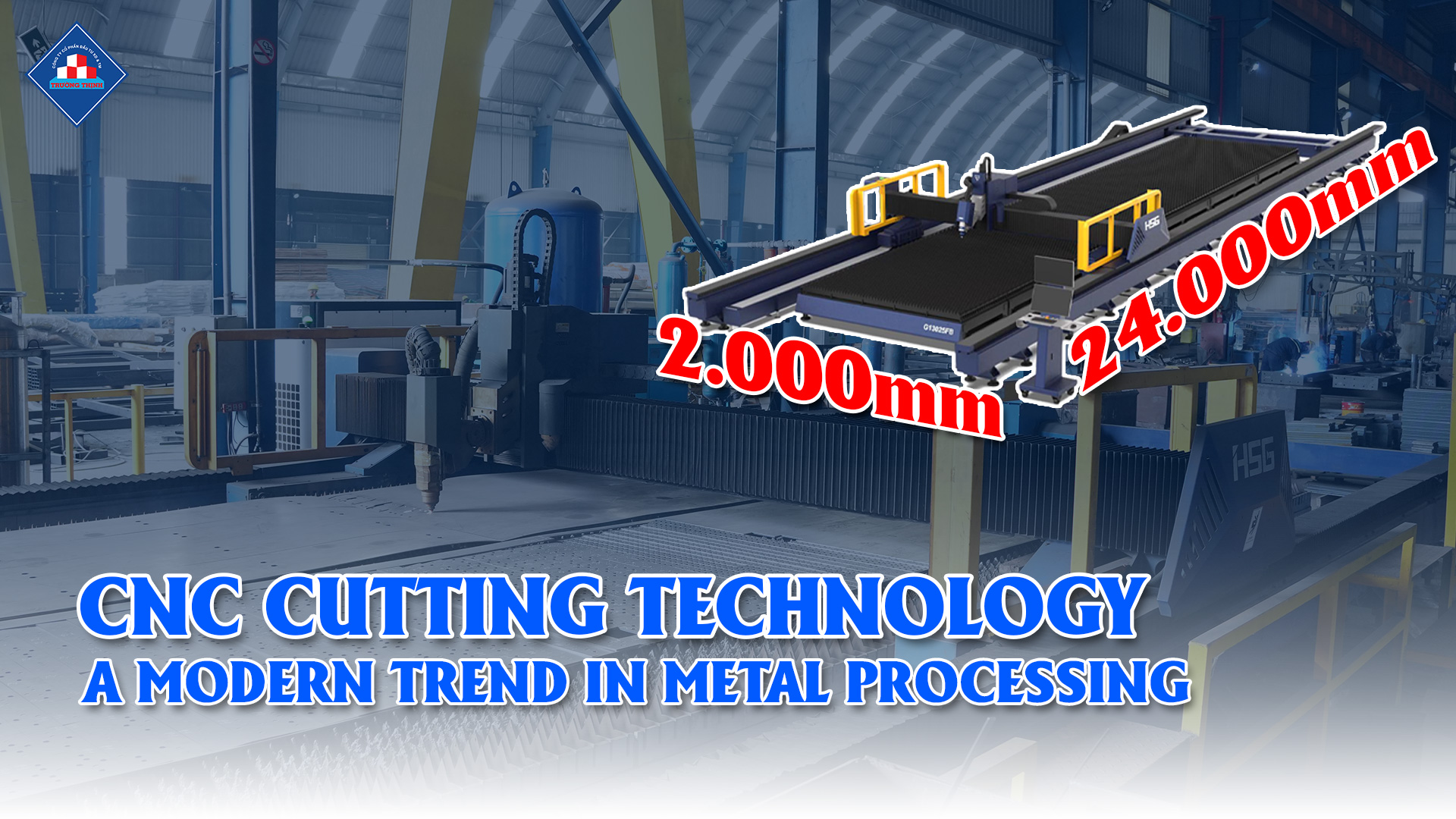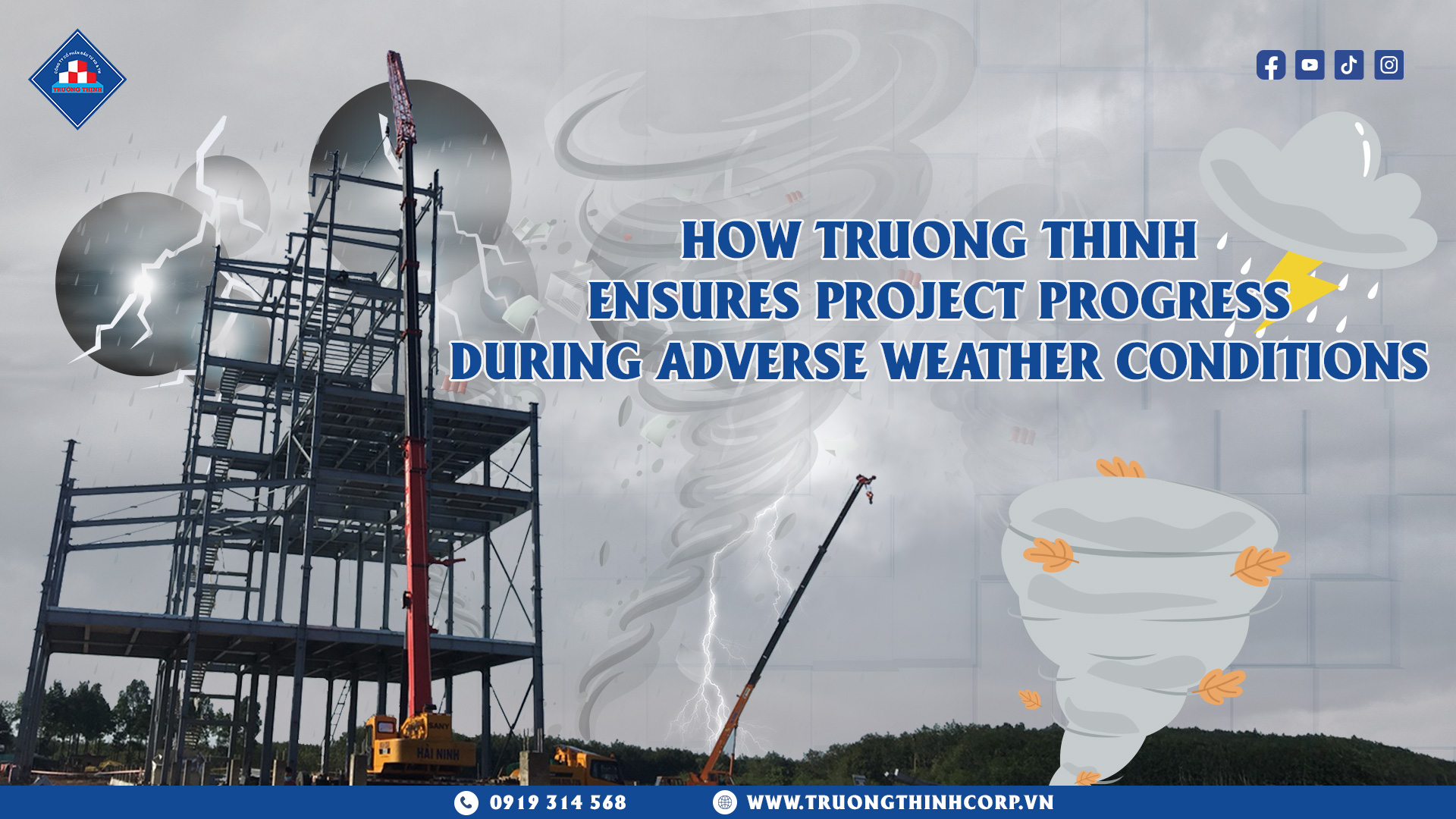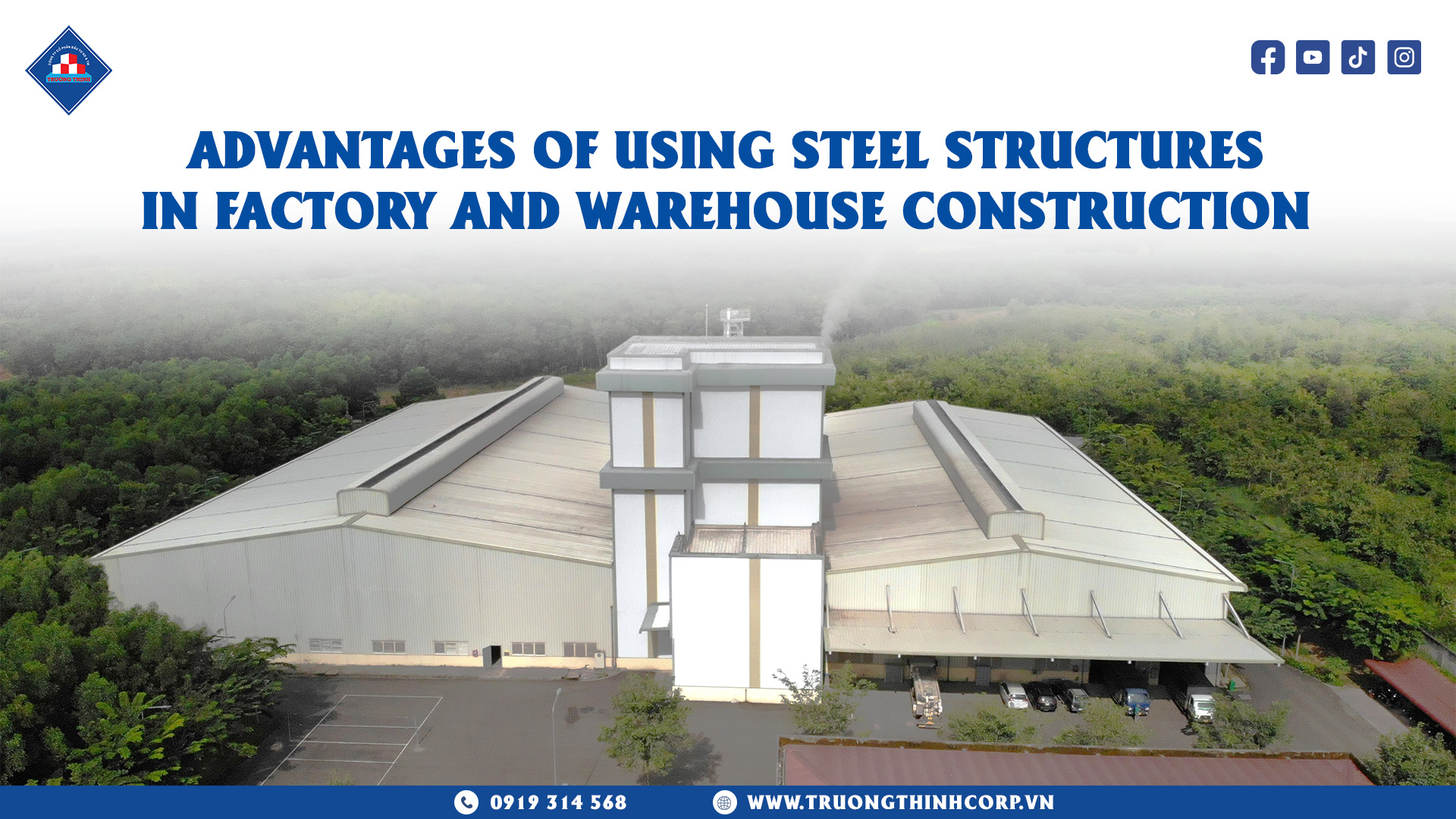Key Standards In Steel Structure Fabrication

Steel structure fabrication demands precision, strict quality control, and rigorous compliance with technical standards. Meeting these standards ensures durability, aesthetics, safety, and long-term operational efficiency. Here are the most important standards to emphasize throughout the steel structure fabrication process.
1. Steel Material Standards
Materials are the core of any steel structure. International and national standards include:
- ASTM (USA): ASTM A36, ASTM A572, ASTM A992 – specifying tensile strength, elongation, and weldability.
- JIS (Japan): JIS G3101, JIS G3106…
- EN (Europe): EN 10025-2, EN 10210…
- TCVN (Vietnam): TCVN 1651, TCVN 197…
These standards define chemical composition, tensile and yield strength, ductility, and load-bearing capacity, ensuring that the materials are suitable for applications such as pre-engineered buildings, industrial factories, high-rise structures, and infrastructure projects.
2. Steel Structure Design Standards
Design sets the foundation for the entire fabrication process. A qualified design must comply with standards such as:
- TCVN 5575:2012: Vietnam standard for steel structure design.
- AISC (American Institute of Steel Construction): Widely applied in international projects.
- Eurocode 3 (EN 1993): European standard for steel structure design.
These guidelines cover load calculations, connections, stability, and stress checks, ensuring both safety and cost optimization in construction.

3. Fabrication and Welding Standards
Strict compliance with fabrication and welding standards is required, as these processes directly shape the final product. These standards regulate electrode types, welding methods (MIG, MAG, TIG…), welder qualification, and non-destructive testing (NDT) to ensure both strength and aesthetics of welded joints. The following standards are used:
- AWS D1.1 (USA): The most widely recognized standard for structural steel welding.
- ISO 3834: Quality management system for welding processes.
- TCVN 6260, TCVN 5637 (Vietnam): Standards for welding procedures, inspection, and quality evaluation.
4. Painting and Surface Protection Standards
To resist corrosion and extend service life, steel structures must be surface-treated after fabrication and welding. Different protective systems are applied depending on environmental conditions (marine, indoor, outdoor…) to prevent rust, cracking, or deterioration. Relevant standards include:
- ISO 12944: International standard for corrosion protection using coatings.
- SSPC (USA): Guidelines for surface preparation, blasting, anti-rust coating, and finishing.
- TCVN 8789:2011: Vietnam standard for industrial coating application and acceptance.
5. Installation and Acceptance Standards
Correct installation is the final step, determining overall safety and system integrity:
- TCVN 5308: Technical safety in construction.
- TCVN 170:2007, TCVN 4091:1985: Acceptance standards for structural works.
- OSHA (USA): Safety standards for steel erection at heights.
Strict adherence ensures not only worker safety but also project synchronization, timely delivery, and long-lasting stability.
In steel structure fabrication, quality is defined not only by equipment, craftsmanship, or factory capability, but also by strict compliance with technical standards at every stage. This reflects professionalism and reaffirms the commitment to safety and sustainability for every project.









